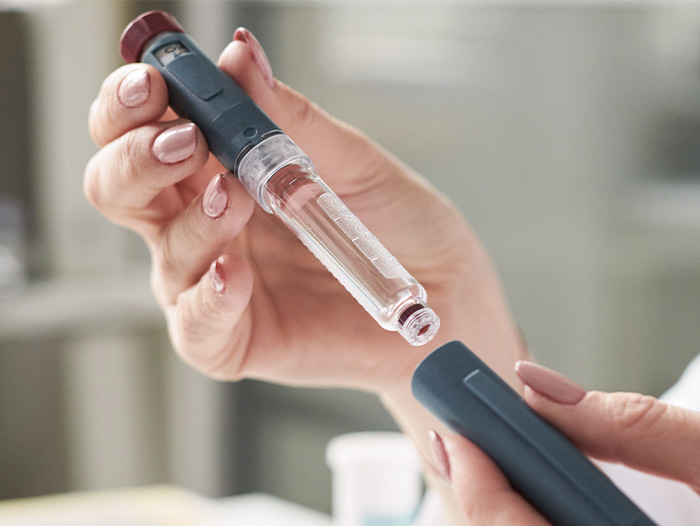Auto logout in seconds.
Continue LogoutWith drug shortages mounting and financial pressures intensifying, health systems are increasingly turning to centralized pharmacy services to streamline operations and reduce costs. Writing for Modern Healthcare, Caroline Hudson highlights how four organizations are reshaping their pharmacy operations — and the financial impact they expect to see.
University of Virginia Health
University of Virginia Health (UVA Health) is building a 40,000-square-foot pharmacy central services center in Charlottesville to house inventory, supply management, and prescription fulfillment for 10 ambulatory pharmacies, including a specialty and home delivery pharmacy.
The facility will use robotics and a conveyor system to triple UVA Health's fulfillment capacity and include an AI-powered central call center to reduce wait times.
Danielle Griggs, the system's chief pharmacy officer, said the center is designed to off-load volumes from smaller retail locations that have outgrown their space, while also helping UVA strategically expand its pharmacy services into specialty drugs, infusion therapies, and home delivery.
The health system projects $1 million in initial savings by eliminating duplicate purchases of costly medications across care sites.
Baptist Health
In mid-2024, Baptist Health opened a $40 million, 102,000-square-foot shared pharmacy services center. The facility consolidates inventory management, fulfillment, distribution, and call center operations, with compounding services planned for the future.
The center supports a large network that includes eight hospitals, 12 retail pharmacies, seven infusion centers, five surgery centers, and more than 400 clinics.
Chief pharmacy officer Nilesh Desai said Baptist turned to the model to cope with hundreds of drug shortages, rising costs, and workforce constraints. By partnering with vendors such as Medline and Cardinal Health, Baptist developed a technology platform that automates sorting and packaging, helping the facility fill up to 14,000 prescriptions per 10-hour production shift.
According to Desai, the health system expects to recover its investment within a decade, if not sooner.
West Virginia University Health
West Virginia University Health (WVU Health) plans to expand its centralized pharmacy warehouse by 6,000 square feet this year. The facility is located in a former Mylan pharmaceutical plant that was purchased in 2022.
WVU uses the warehouse to repackage and distribute drugs, stockpile critical medication, and track shortages. Starting in 2026, the health system will also centralize specialty pharmacy, home infusion, and mail-order operations at the site.
"There is a significant return on investment," said Todd Karpinski, WVU's chief pharmacy officer. "We can expand our product line. It expands our ability to store medications as well as create a larger operational footprint."
So far, WVU Health has reported $1.2 million in savings in 2025, with expectations to recover its initial costs within a few years.
Advisory Board's pharmacy-related resources
- Specialty pharmacy is often seen as a win/win for health systems and patients. But can it last?
- Register now: Specialty pharmacy market trends
- From convenience to core strategy: Redefining the role of the health system pharmacy
- Specialty pharmacies: Where they are and where they're going
- What the next 10 years hold for specialty pharmacy — and 3 ways to succeed
Henry Ford Health
In September 2023, Henry Ford Health opened a $16.6 million centralized pharmacy services center. The facility includes teams to oversee how medications are used across the system, as well as manage vendor contracts and payer agreements.
The center supports 43 outpatient pharmacies, a mail-order pharmacy, 13 hospitals, and 17 infusion sites, along with locations from Henry Ford's joint venture with Ascension Michigan.
Rox Gatia, VP of pharmacy shared services, said that regulatory and financial headwinds — including low reimbursement rates and drug pricing reforms — accelerated the need to centralize.
"We can't do things incrementally and try to tackle each of these things as an individual headwind," Gatia said. "We needed to basically go all-in and fully transform the way that we do business."
Henry Ford's multiyear plan includes ambulatory pharmacy integration, automation, such as dispensing cabinets, and efforts to centralize compounding. The health system estimates $30 million in savings over five years from the initiative.
The bigger picture
Across the country, health systems see pharmacy centralization both as a cost-cutting strategy and a way to build resilience amid industry uncertainty. Leaders say the investments are positioning them to better serve patients, streamline supply chains, and better manage mounting regulatory pressures.
"We're seeing more systemization of hospitals, and as those systems form or mature, there are obvious opportunities for efficiencies, whether it's financial or whether it's for workforce," said Michael Ganio, senior director of pharmacy practice and quality at the American Society of Health-System Pharmacists.
"There are safety requirements and a number of new regulatory changes that call for consistency and accountability in medication management, and so for all of those reasons, [centralization] is a good idea," said Michael Abrams, managing partner at consulting firm Numerof & Associates. "[It's] likely to become better over time."
(Hudson, Modern Healthcare, 8/27)
Centralized pharmacy services: What you need to know
By Gina Lohr and Chloe Bakst
Centralized pharmacy inventory and services are increasingly common strategies for health systems to reduce drug costs, improve supply chain resilience, and drive operational efficiency. This isn’t a novel approach — early adopters pursued this strategy a decade ago, and the business case has only strengthened due to rising drug costs, supply chain volatility, and the growing role of pharmacy services as a part of health systems’ care delivery.
Reducing pharmacy purchasing costs is core to the business case. With a standard formulary and central purchasing, health systems can reduce drug waste by minimizing expiring inventory and gain time efficiencies across purchasing staff. They can also more easily pursue discounts, both through bulk orders and direct negotiations with manufacturers. A centralized model also enables health systems to more efficiently share drugs in shortage across hospitals and other care sites, saving money and improving patient care.
Still, achieving these outcomes requires a significant financial commitment — centralized pharmacy service centers often require millions of dollars in capital and multi-year planning. To implement such a plan, health systems must grapple with questions like:
- Should the centralized inventory serve only hospitals or also clinics and other sites of care?
- Should we standardize our formulary at the same time as we centralize inventory, or should we phase them in sequentially?
- Where should we locate the site to serve a growing, changing health system footprint, and does it also need to be accessible to patients?
- Will savings be attributed to individual care sites or aggregated at the system level?
- Should we invest in building a courier network or rely on commercial logistics and delivery partners?
Check out our report Five Strategies to Lower Medical Group Drug Spend for guidance and case studies about centralizing purchasing and inventory across health systems.
Don't miss out on the latest Advisory Board insights
Create your free account to access 1 resource, including the latest research and webinars.
Want access without creating an account?
You have 1 free members-only resource remaining this month.
1 free members-only resources remaining
1 free members-only resources remaining
You've reached your limit of free insights
Become a member to access all of Advisory Board's resources, events, and experts
Never miss out on the latest innovative health care content tailored to you.
Benefits include:
You've reached your limit of free insights
Become a member to access all of Advisory Board's resources, events, and experts
Never miss out on the latest innovative health care content tailored to you.
Benefits include:
This content is available through your Curated Research partnership with Advisory Board. Click on ‘view this resource’ to read the full piece
Email ask@advisory.com to learn more
Click on ‘Become a Member’ to learn about the benefits of a Full-Access partnership with Advisory Board
Never miss out on the latest innovative health care content tailored to you.
Benefits Include:
This is for members only. Learn more.
Click on ‘Become a Member’ to learn about the benefits of a Full-Access partnership with Advisory Board
Never miss out on the latest innovative health care content tailored to you.


